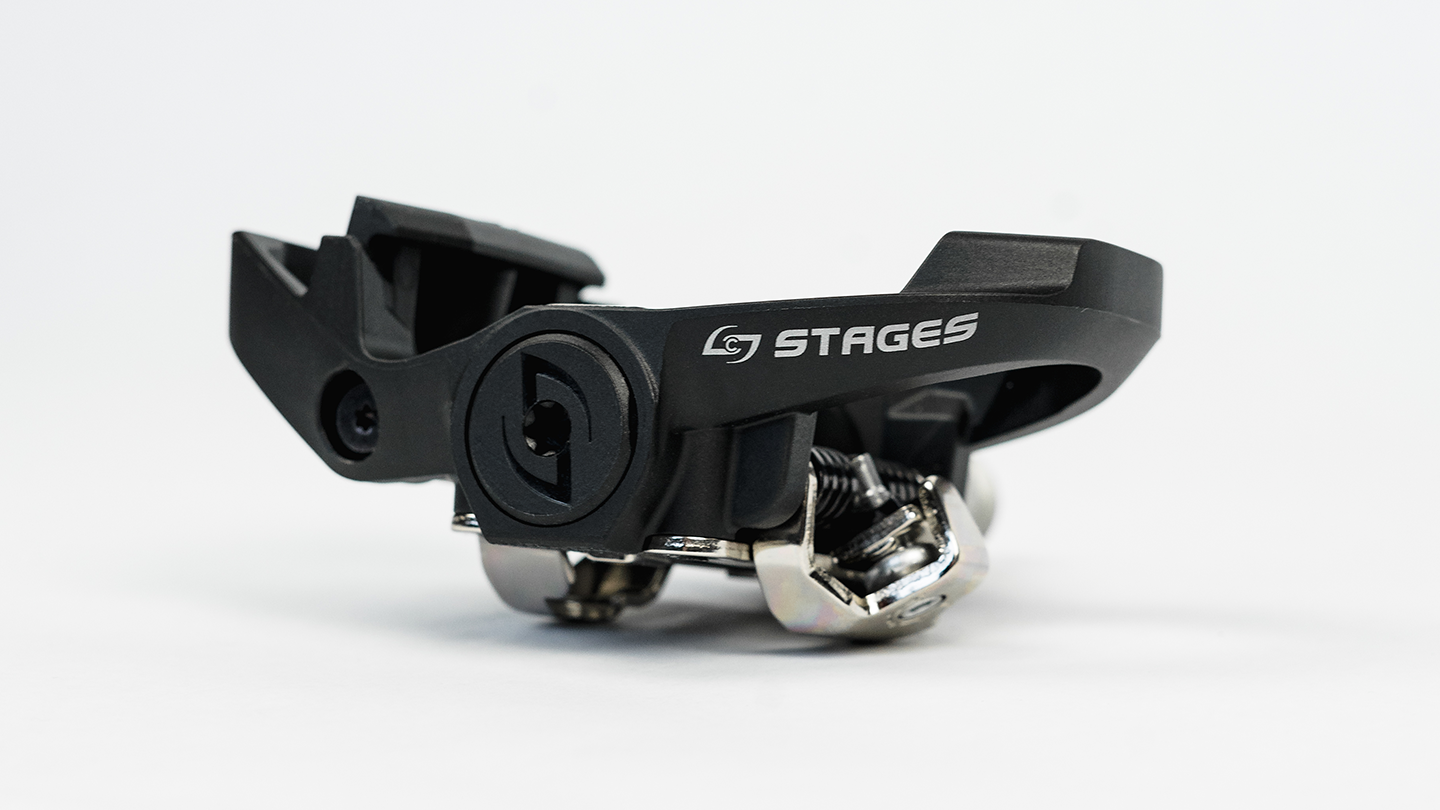GPS Cycling Computers | Why You Need to Ride With One
- By Amber Jaworsky
- Published: 11 Apr 2022
- Last Updated: 14 Apr 2022
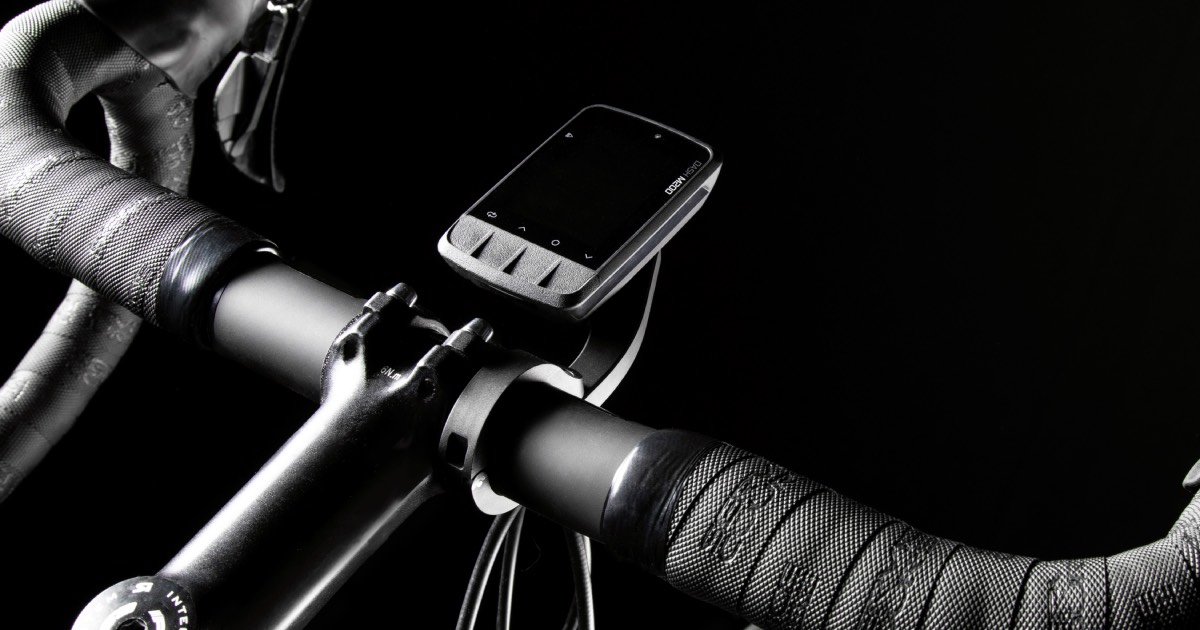
have been around for about 20 years, and have quickly become a cyclist’s best friend. The latest devices, like the new Stages Dash 200, are affordable, incredibly powerful, and are packed with exceptional ride-enhancing benefits that no cyclist should be without. But with so many options available, how do you know if you need a bike computer, and if so, which one might be right for you?
How Do I Know if I Need a Cycling Computer?
Can't I Just Use My Smartphone as a Cycling Computer?
How to Choose a GPS Cycling Computer
Things to Consider Before Buying a Cycling Computer
How to Install a GPS Cycling Computer
How do I Know if I Need a Cycling Computer?
If you have a power meter or like to record and analyze data from your rides, a cycling computer is the best tool for the job.
Can't I Just Use My Smartphone as a Cycling Computer?
We rely on our smartphones for pretty much everything. They forecast the weather, provide driving directions, replace our wallets, and seem to be able to do just about anything! But they crash and burn as a cycling computer. Sure, they house our essential cycling apps, but they fall short during actual rides in key areas like battery life, waterproofing, durability, cold weather performance, screen visibility, GPS reliability, and cost. When it comes to cycling, a phone is simply not the right tool for the job, but a GPS cycling computer is.
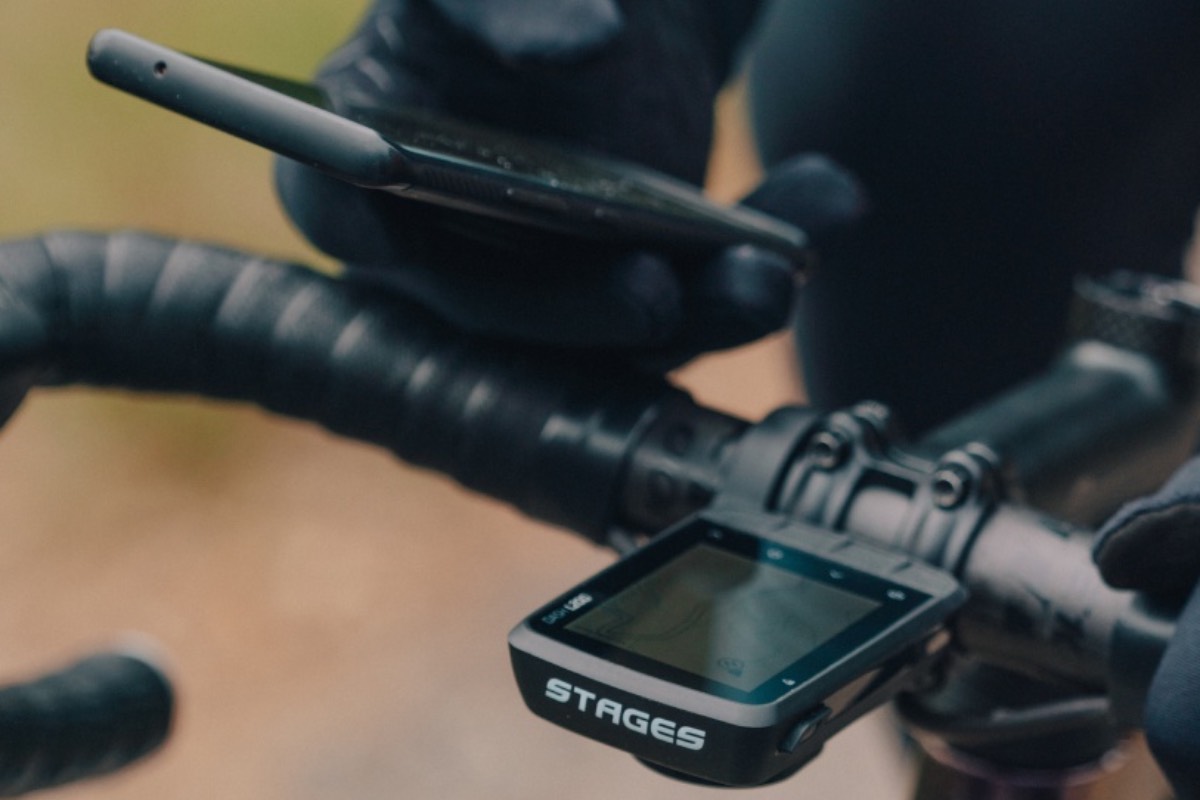

How to Choose a GPS Cycling Computer
Start by identifying the type of information and features you want.
Similar to the dashboard display in a car, a handlebar-mounted bike computer communicates a range of data points from simple things like how fast or how far you’ve gone, to more performance-based information like cadence and power. Many also offer turn-by-turn navigation support. Clarifying what you want to measure and what you want to use your cycling computer for will help you narrow down your choices.
What’s Your Price Range?
Cycling computers can range from $60 – $600 depending on the technology and features you’re looking for.
Things to Consider Before Buying a Cycling Computer
Battery Life
Most cycling computer batteries last approximately 10-20 hours even with satellite navigation and ANT+ connections running. The type of riding you do will determine how much battery life you’ll need. If you are recording your rides, tracking a lot of data, and using navigation simultaneously, you will require more from your battery. If you’re interested in conserving the life of your battery, many cycling computers have a reduced power mode that enables you to power down a few features, like display brightness, for example, to maximize battery life.
Screen Size / Display
Cycling computer screens are made for outdoor use so they utilize high contrast screens that make it easier to read in bright sunny conditions. If you plan on reading detailed navigation maps or tracking a multitude of data fields while in motion (Dash L200 holds up to 12 on one screen), a larger and easier-to-read screen might be a prerequisite. If you’ll be viewing color-coded routes, workouts, power training zones, or other live workout graphs, you’ll also want to consider a cycling computer with a vivid full-color screen display to best support those features.
Accuracy
Cycling computers use a combination of GPS signals from satellites, onboard barometric altimeters, and real-time average speed calculations to establish speed, distance, and elevation. Differences in hardware and the quality of satellite data can affect their overall accuracy. With that being said, most cycling computers can gauge accuracy down to 2 inches in ideal conditions. The elevation recording for Stages Dash is accurate within 20 cm.
Device Pairing
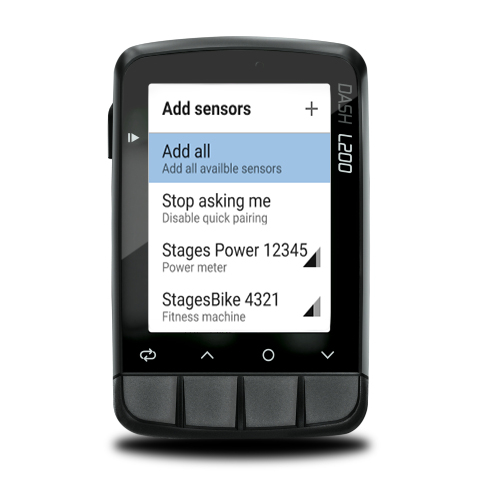

Nearly all GPS Cycling Computers are now ANT+ and Bluetooth compatible and can 'pair' to connect with additional sensors such as heart rate monitors, power meters, smart lights, and smart trainers.
Power Meter
A power meter is one of the first sensors you will most likely connect to your GPS cycling computer. A power meter is a tool that precisely captures and quantifies the amount of work that’s put into a ride. It does this by measuring the amount of power a cyclist produces. This measurement is expressed in watts and is transmitted wirelessly, through ANT+ and/or Bluetooth, to your GPS cycling computer where it can be viewed and analyzed.
Cadence
Most GPS cycling computers are compatible with cadence sensors. Cadence is the measurement of the rider’s rate of pedaling, displayed in revolutions per minute or RPMs. Premium quality cycling power meters, including all Stages models, measure cadence and easily connect to most GPS cycling computers when power is paired. This is the easiest way to add cadence to your ride, but the most affordable way is with an accessory cadence sensor. This small ANT+/Bluetooth transmitter attaches to your bike near the crank to measure cadence and then wirelessly passes data onto your computer.
How to Install a GPS Cycling Computer
GPS cycling computers usually come with mounting hardware that attaches to the handlebars or stem of your bike. Most designs position the computer at the same height as the bars, but out in front of the bar so the screen is easily visible without taking up space or hand positions on your handlebars. The most popular mounting mechanisms utilize a quarter-turn lock. This type of mount requires the computer to be twisted and locked into place. You’ll know it's secure and stable by the way it feels as it anchors and clicks into position.
Road Bike Cycling Computer Placement
The best mount options keep your cycling computer safe, secure, and accessible during your ride. With that in mind, placement is key! For road bikes, you’ll want to choose an out-front or stem mount that allows you to keep your eye on the road and your bike computer in view. It’s also helpful to align the mount towards the left side. This frees up the left hand to operate the bike computer while the right hand, which activates the rear brake, stays engaged on the handlebars. This minor shift in placement can help prevent you from going over the handlebars in the event of a one-handed hard brake.
If bike weight, power, and aero benefit are things you are considering, an integrated mount might be worth investing in. This type of mount situates the bike computer flush with, rather than above the line of your bar and stem. Having it flush makes it easier to use and can save you at least 0.5 watts through the aero benefit. Third-party mount manufacturers, like K-Edge, offer a variety of mount options.
Mountain Bike Cycling Computer Placement
From a visibility and accessibility standpoint, an out-front mount is always a great option, but if you plan on aggressive or technical trail riding, you might want to consider mounting your computer on the bike stem. This placement keeps your head unit in view, but better protects it in the event of a crash. Most GPS bike computers also come with a connection leash that easily loops to the handlebars. This ensures that your computer stays connected to the bike if it gets dislodged from the mount.
Triathlon Bike Cycling Computer Placement
Mounting a bike computer to a triathlon (time trial) bike can be tricky. Space is tight and there are very few obvious areas for the head unit to go. The stem is often overlapped by the aerobar pads/mounts, which can rule out placement there. This then leaves the aerobars and the associated airspace in between them as your only option. If you find yourself in this camp, many companies offer a range of options via accessory mounts which can include stem top cap mounts, small diameter adjustable mounts, and a variety of specialty 2-bolt options for integrated handlebar designs. The Stages Dash L200 and M200 also come with an Anywhere Mount, that can be attached just about anywhere on your bike using two elastic bands. Choose the accessory mount that works best for your bike, and rest assured that the time, money, and effort you put into adding a bike computer is a fair trade for all of the data it will provide.
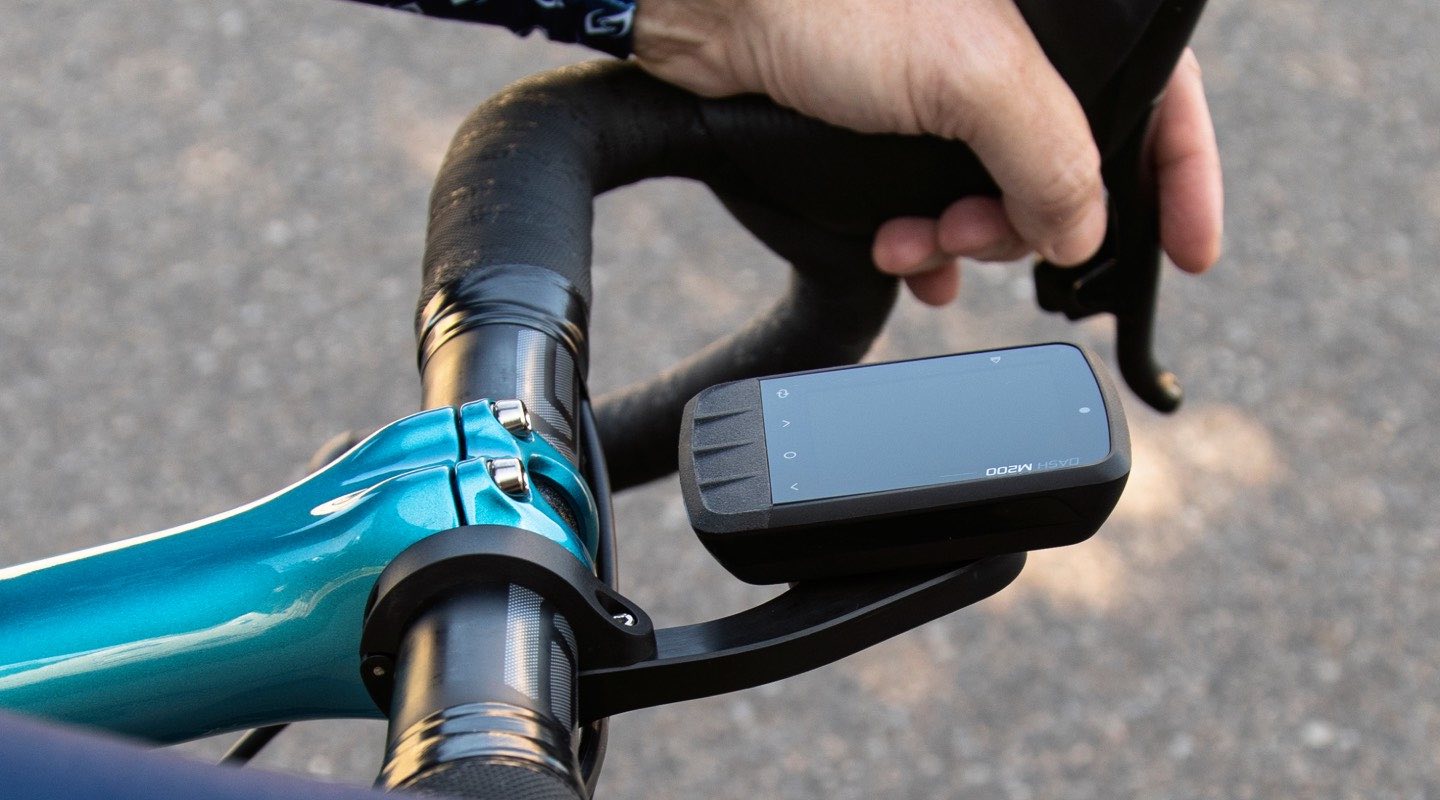

What Kind of Data Will a Cycling Computer Display?
A GPS cycling computer makes every ride better for every cyclist. It can tell you where you are when you get lost, how hard you are working, and even where the closest bathroom is! All you have to do is turn it on and ride and you can view:
Maps & Navigation:
Track your position, find new trails, record your route, and get notifications for upcoming turns and distances.
Basic Ride Info:
Time elapsed, distance, speed, clock, elevation gain, pre-loaded workouts.
Real-Time Training Data:
From paired sensors like a power meter, heart rate monitor, or cadence sensors including Calories Burned, Average Watts, Max Watts, Average Heart Rate, Max Heart Rate, Average Cadence, Max Cadence, Power Zones, Live Workout Graphs.
Notifications:
Smart lights, email, texts, phone calls.
As soon as your ride is over, most GPS cycling computers wirelessly sync your data to a cycling app on your phone where you can view cumulative riding data and so much more! Bike computers take your training and your workouts to the next level.
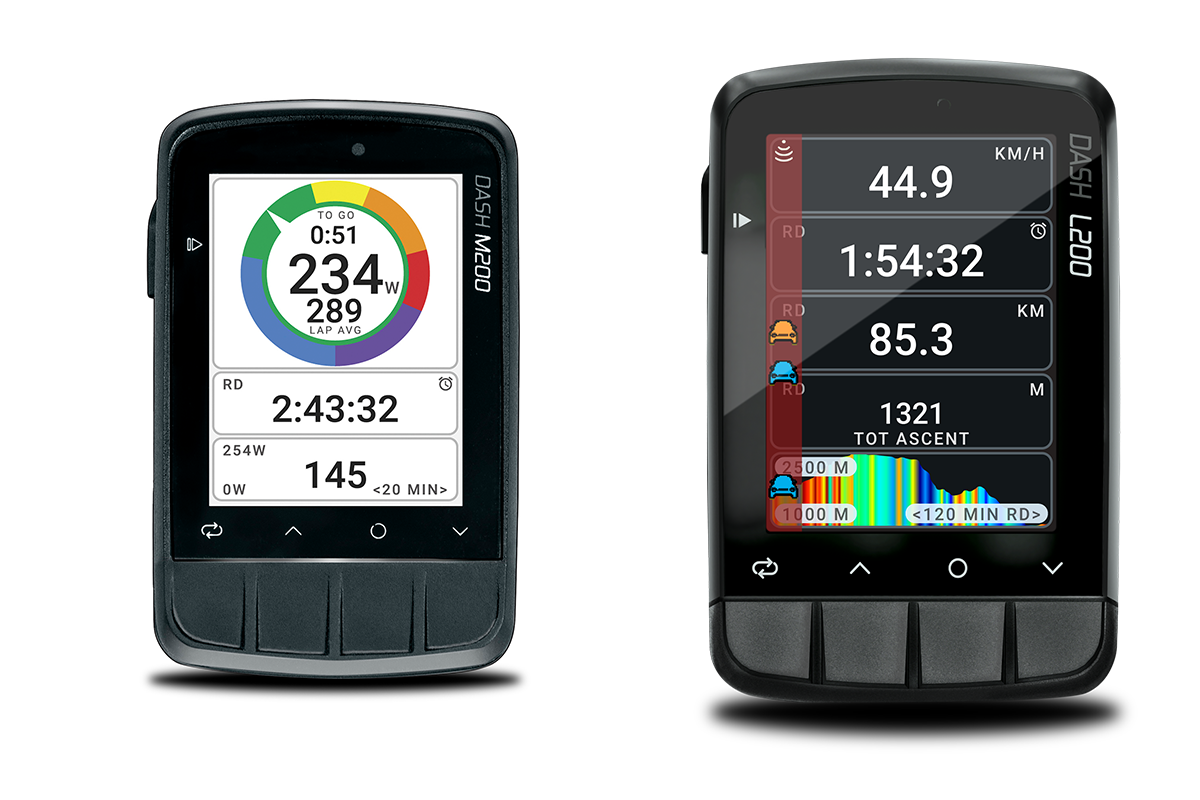

How to Get Better at Cycling With a Cycling Computer
Power Output
Pros and recreational cyclists everywhere are discovering that power is fundamental to cycling performance. But, power is useless unless a rider can see their data, so pairing a power meter to a cycling computer is the only way to collect and analyze power output. The whole premise of training with power is to quantify effort. If you can measure your power output, you can measure improvement. And you can measure the workouts needed to get there too.
Here’s some quick background on how this works. Power meters measure two things: torque (how hard you’re pushing the pedals) and cadence (how fast the pedals are turning – or revolutions per minute). This measurement is expressed in watts. To achieve a higher wattage, you must either increase your cadence in a given gear or keep your cadence the same and shift to a higher gear; either method will result in higher power output and an increase in speed. A cycling computer displays your effort in real-time and helps you train more effectively.
To start riding with power, a test to determine your functional threshold power (FTP) is necessary. FTP is an estimation of the amount of work you can do for one hour in an all-out, race-like ride. Once you know this number, power training zones can be calculated and used for workout targets. Riding in each zone affects the body in unique ways and allows you to purposefully target specific exercise intensities (like active recovery, endurance, tempo, threshold, VO2 max, and anaerobic) while avoiding overtraining.
Cadence
Have you ever noticed how smooth, rhythmic and effortless professional cyclists look as they race along the countryside? Their legs move in a coordinated tempo whether they’re climbing up a steep hill or flying through a flat road. That apparent ease comes from hours and hours of riding and cadence training.
Cadence is measured by how fast a rider turns the pedals, or RPM. Riding at a high cadence of around 85-90 RPM puts more stress on your heart and lungs, but a lot less stress on your legs and back. This allows you to minimize muscular fatigue and build aerobic endurance so you can maintain your pace for a longer amount of time. Riding at a low cadence forces you to push harder on the pedals to turn the cranks around which fatigues the leg muscles faster and decreases your ability to maintain your pace for the long haul.
A cycling computer makes it easy to engage in cadence drills that help you become a more efficient, faster, stronger rider. You can also utilize pedaling technique drills as a great recovery ride.
Elevation
Whether you’re preparing to attack an uphill climb or merely survive your way to the top, climb-specific data can be incredibly useful. Hills come in lots of different sizes and shapes and most GPS cycling computers help you manage your pace by communicating the distance to the start, average gradient, distance to the peak, and details on the number of climbs you will face within a ride. They can also help you track elevation progress throughout your ride with real-time elevation graphing that differentiates varying gradients across individual ascents with color-coded elevation profiles.
In addition to providing loads of elevation data that can be used to plan and execute your rides, GPS cycling computers can help you train to climb the mountain. Let’s face it, climbing is hard. It hurts more than all of your other efforts on a bike because you are fighting gravity without any breaks. There’s no coasting or missing a pedal stroke, you just have to stay in the grind until you get to the top.
One of the key ways to increase your ability to climb is to increase your thresholds, either lactate threshold or FTP. Performing workouts that increase your threshold is valuable not only to climbing but to your overall fitness as a cyclist. The higher your threshold the more power you can generate for the duration of the climb.
GPS cycling computers provide structure for this kind of training by establishing training zones, like sweet spot training and anaerobic intervals. Sweet spot intervals are the perfect way to increase your threshold without accumulating excess training stress. These intervals are performed at 80 to 90 percent of your FTP and usually last anywhere from 15 to 30 minutes. In comparison, anaerobic intervals are performed above your threshold and usually last for 10 seconds to 1 minute. This type of training strengthens your top-end power when the climbing gets steep and you have to rise out of the saddle.
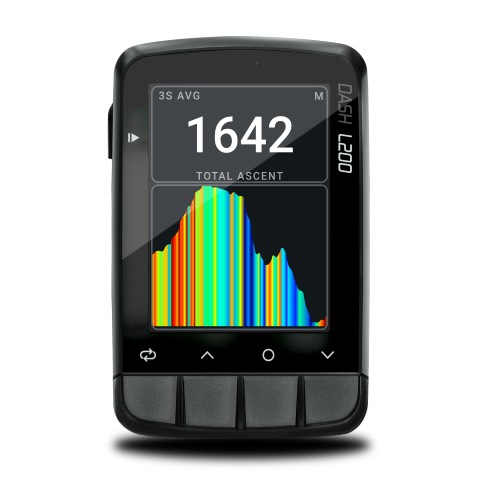

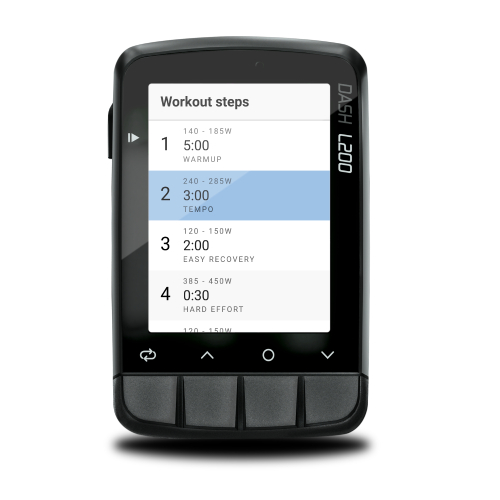

Workouts
Many third-party apps, like Zwift, TrainingPeaks, and Today’s Plan, provide structured workouts and training plans to improve fitness and strength on the bike. These workouts can be exported from the app to your device in a matter of seconds. Once downloaded, bike computers utilize full-color screens to provide visual and audible cues to guide you through a workout.
Cycling computers can also easily connect to indoor trainers and smart bikes to ensure that you never have to miss a workout again. Just clip in and connect, and all of your favorite workouts will automatically flow from your cycling computer to your smart bike/trainer.
Regardless of how you ride, or what you’re training for, GPS cycling computers make great training partners.
















